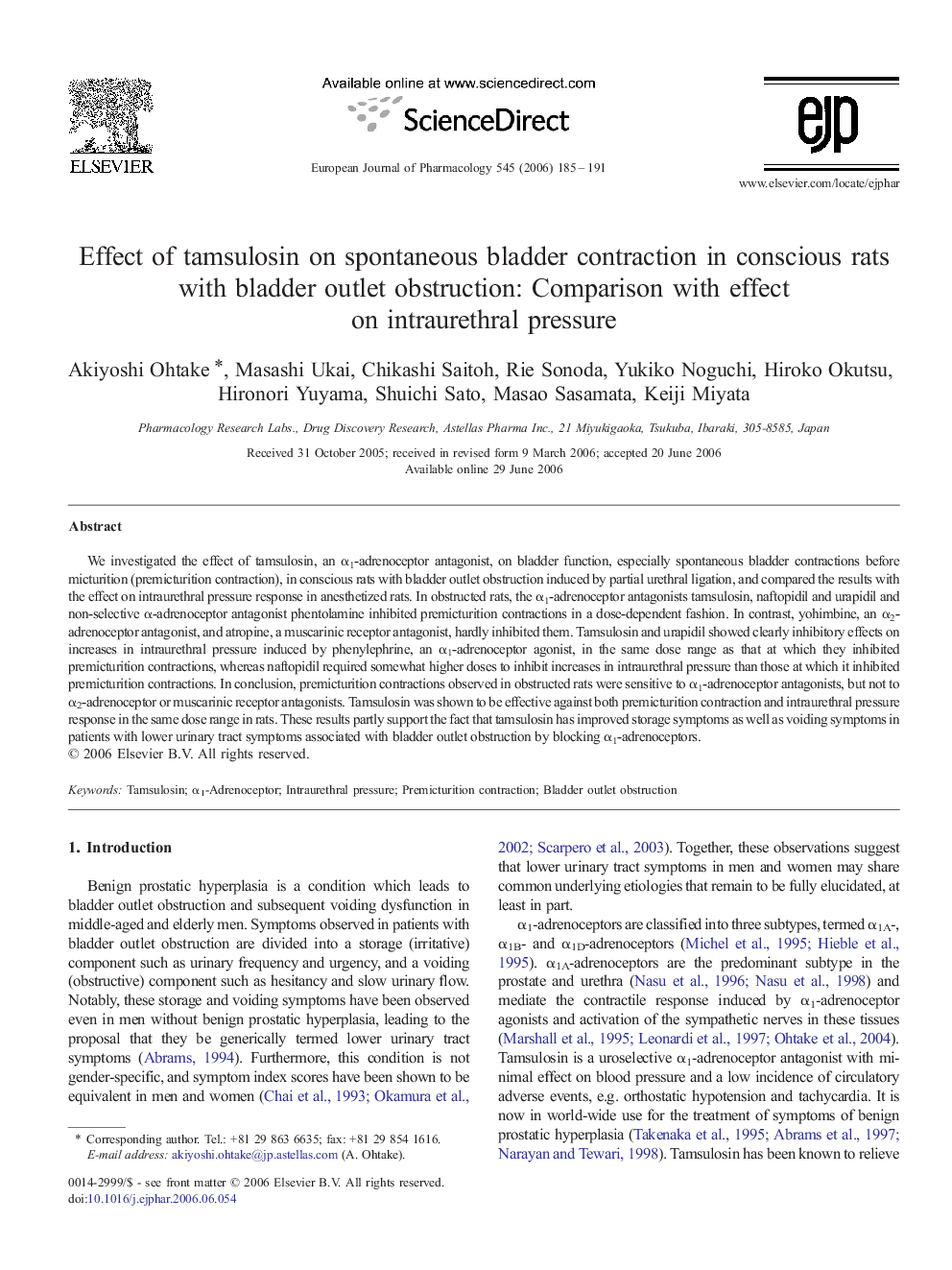| Article ID | Journal | Published Year | Pages | File Type |
|---|---|---|---|---|
| 2536887 | European Journal of Pharmacology | 2006 | 7 Pages |
We investigated the effect of tamsulosin, an α1-adrenoceptor antagonist, on bladder function, especially spontaneous bladder contractions before micturition (premicturition contraction), in conscious rats with bladder outlet obstruction induced by partial urethral ligation, and compared the results with the effect on intraurethral pressure response in anesthetized rats. In obstructed rats, the α1-adrenoceptor antagonists tamsulosin, naftopidil and urapidil and non-selective α-adrenoceptor antagonist phentolamine inhibited premicturition contractions in a dose-dependent fashion. In contrast, yohimbine, an α2-adrenoceptor antagonist, and atropine, a muscarinic receptor antagonist, hardly inhibited them. Tamsulosin and urapidil showed clearly inhibitory effects on increases in intraurethral pressure induced by phenylephrine, an α1-adrenoceptor agonist, in the same dose range as that at which they inhibited premicturition contractions, whereas naftopidil required somewhat higher doses to inhibit increases in intraurethral pressure than those at which it inhibited premicturition contractions. In conclusion, premicturition contractions observed in obstructed rats were sensitive to α1-adrenoceptor antagonists, but not to α2-adrenoceptor or muscarinic receptor antagonists. Tamsulosin was shown to be effective against both premicturition contraction and intraurethral pressure response in the same dose range in rats. These results partly support the fact that tamsulosin has improved storage symptoms as well as voiding symptoms in patients with lower urinary tract symptoms associated with bladder outlet obstruction by blocking α1-adrenoceptors.
